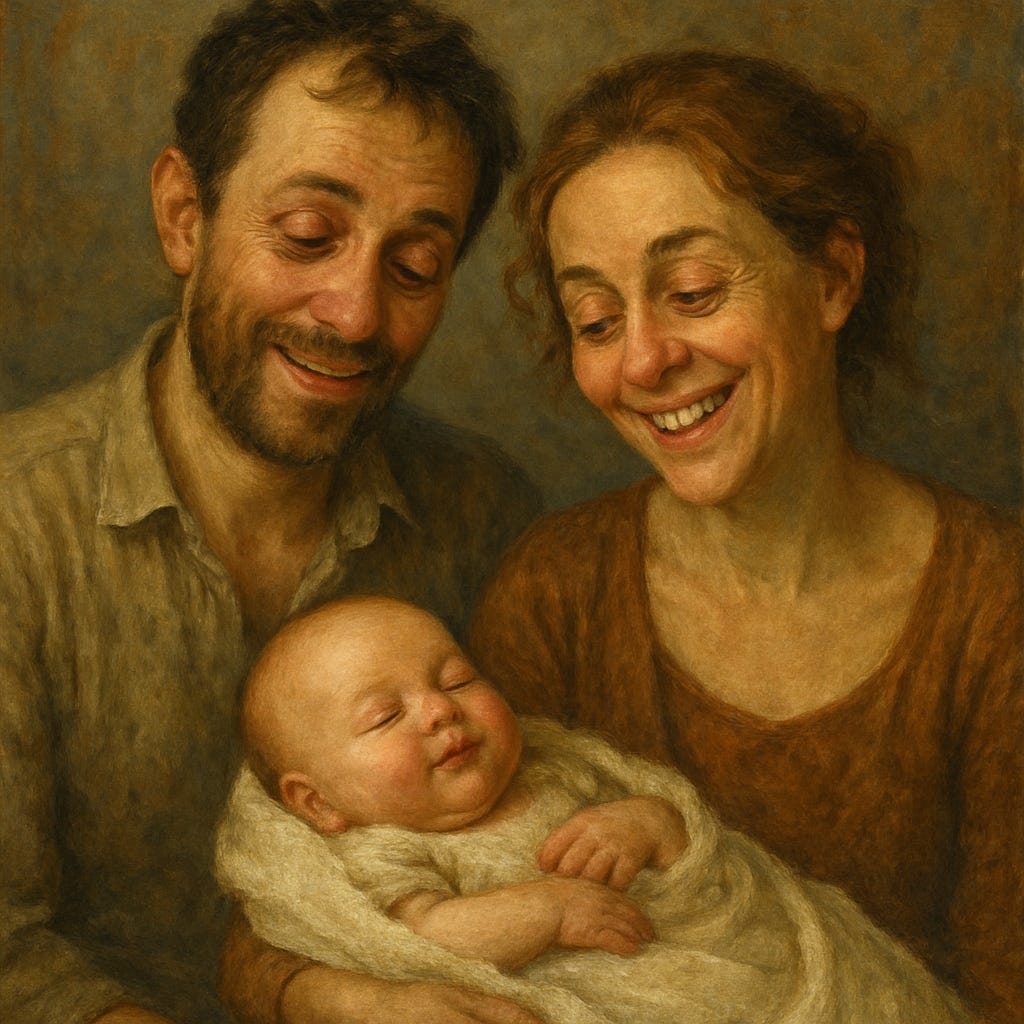Parenthood Is Always Meaningful But Not Always Satisfying, and Other Interesting New Research
Nuances of the Gender Leisure Gap; The Uniquely Severe Loneliness of Young American Men; The Difference Between Fertility Desires and Fertility Intentions + more.
Hello everyone,
Welcome to a very crappy installment of Family Stuff. This one is likely extra typo-ridden on account of the fact that, as of last Sunday, the Murray family is officially above replacement level (I am…sorry…for that… It was just there for the taking. Couldn’t resist). Anyway, really phoned it in on this one. Probably should have just skipped it altogether but..idk it would just have annoyed me to do that. So please enjoy the round-up with an extra pinch of salt this week (and, tbh, probably for the next several weeks). To the extent that I read these studies, I mostly skimmed them. You’ve been warned!!

The Difference Between Fertility Desires and Fertility Intentions
When trying to get a sense of people’s fertility goals, demographers often use fertility desires (or ideals) and fertility intentions. Sometimes, people talk about these metrics interchangeably, but technically they are measuring different things. Desires capture wants; intentions, plans. Theoretically, it is possible to desire children without intending to have any, or even to intend children you do not desire.
This study tried to get a clearer understanding of how fertility desires and intentions line up. It’s based on survey data in which respondents were asked if they “want to have (a/nother) baby at some time” and also, in a separate question, whether they “intend to have (a/nother) baby at some time.” Possible responses include: “yes,” “no,” and “don’t know.”
Broadly speaking fertility desires and intentions tend to line up, with people either both desiring and intending more kids, or not desiring and not intending more kids. There was only a very small minority of respondents (3.9% of men and 5.6% of women) who desired but did not intend more children. And pretty much no one intended children without desiring them. (A note: respondents who are physically unable to have kids were not asked about their fertility intentions. When you include them in the sample, the “the gap between fertility desires and intentions widened, with 9.2 per cent of respondents reporting desiring but not intending more children.”)
But the size of the fertility desires-intentions gap increases with age and the number of kids someone has. It’s very small among those without any kids and those in the youngest age group, “with nearly all respondents who desire a(nother) child also intending to have one.” But the discrepancy rises “almost linearly,” such that among those in their late 40s who want children, 40.8 percent of men and 55.7 percent of women do not intend another child. The authors think this supports the idea that “fertility goals among young individuals reflect more intrinsic motivations for having or not having children, whereas among older individuals they reflect a more crystallized and planned choice.”

Also, the desires–intentions gap was also reliably higher among women than men. That is, regardless of age, “women who desire more children are less likely to intend additional children than men who desire more children.” And the gender discrepancy gets bigger with age, perhaps reflecting women’s “stricter normative and biological deadlines for childbearing.”



